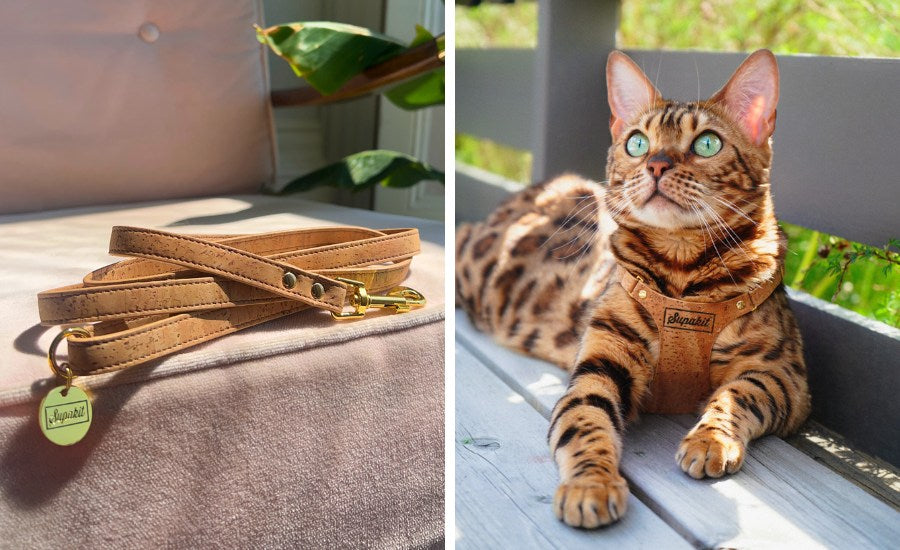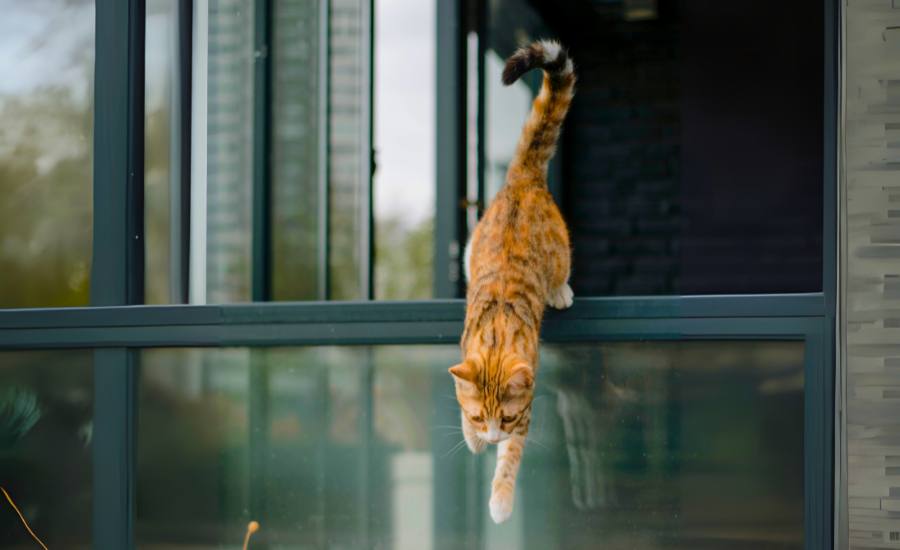Cat Eyes – Your Questions Answered
Uncover the mysteries of cats’ eyes. Read on to discover how your cat sees you and the world around them.
Can Cats See In The Dark?
Just like our own eyes, cats’ eyes can change depending on how bright the light is around them. In low-light conditions and darkness, their pupil will dilate (get bigger), allowing more light to enter the eye.
Humans’ pupils can only dilate by 15 times in darkness. In comparison, a cat’s pupil can dilate by 135 times! (1) This super ability allows our kitties to see much better than us when light levels are low.
Once light enters a cat’s eye, it will hit the retina at the back of their eye. Within the retina there are two main types of light-detecting cells: rods and cones. Cone cells are responsible for colour vision and work best in daylight. Rods cells dominate peripheral vision. They detect contrast and movement, and are effective in low light. Cats have 6 to 8 times more rod photoreceptors than humans do, which makes cat vision better in low-light conditions. (2)
Cats also have a special structure known as a tapetum lucidum in their eyes. This reflective layer is what makes cats’ eyes flash green (or other colours) in the darkness. The tapetum lucidum reflects light back to the light-detecting cells in the retina for a second chance of absorption, which improves cats’ night-vision. (3)
However, in true darkness, cats cannot see. Where there is no light at all, it is impossible for cats’ vision to work, despite all their adaptations.
Can Kittens See In The Dark?

Adorable little newborn kittens are blind. They keep their eyes closed and rely on their senses of smell and touch instead. At 2 weeks old, kittens open their eyes, but their vision is blurry.
Over the next few weeks, kittens’ vision improves. However, kittens cannot contract and dilate their pupils fully. Because of this, it is important not to expose them to bright lights as this can damage their vision and cause pain.
At 6 weeks old, a kitten’s vision is fully developed. They can see well in low-light conditions just like an adult cat. (4)
Can Cats See Colour?

Yes! Just like us, cats have cone-shaped photoreceptor cells in their retinas which allow them to see colours. However, cats have only one tenth the number of these cells than we do. Because of this, cats aren’t able to appreciate as many subtle colour variations as we do.
What Colours Can Cats See?
The scientific community has not yet wholly agreed on what colours cats can see. Most humans have trichromatic vision. This means that they can see all three of the additive primary colours: red, blue, and green. These 3 colours can be combined to create any other colour!
Most evidence suggests that cats are dichromatic, as 2 types of cone cells have been reliably identified.
This means that cats’ colour vision is similar to that of humans who have a condition called deuteranopic colourblindness (6). Cats and deuteranopic humans struggle to see reds and greens. It is currently thought that cats primarily view the world in shades of blue, yellow, and grey.
Why Do Cats Wink?

If a cat winks it means that the cat’s eye is dry or has something in it. Cats’ eyes have an upper and lower lid like humans, but they also have another lid underneath called the nictitating membrane.
This membrane is translucent and protects the eye from damage. But, if it gets blocked by a hair, or too dry to function properly, your cat needs to close its regular eyelids. This moistens and clears the nictitating membrane.
What Does It Mean When A Cat Slowly Blinks?

Cat slow blinks with both eyes are a form of cat communication. Slow blinks are a bit like a gentle smile. They indicate that your cat is relaxed and happy, and trusts you enough to close its eyes.
Research shows that you can use slow blinks to communicate positively with your own cat. Simply blink very slowly toward them while they are relaxed, and see if they slowly blink back! (7)
References
- Yang, S. (2015). Pupil shape linked to animals’ ecological niche. Science Advances. https://www.eurekalert.org/news-releases/632799
- Ghose, T. (2013, October 16). Feline Vision: How Cats See the World. Livescience.com; Live Science. https://www.livescience.com/40459-what-do-cats-see.html
- Bergmanson, J., & Townsend, W. (1980). The morphology of the cat tapetum lucidum. American Journal of Optometry and Physiological Optics, 57(3), 138–144. https://doi.org/10.1097/00006324-198003000-00002
- Shaw, H. (2018, January 22). Kitten Development: Understanding a Kitten’s Major Growth Milestones. Petmd.com; PetMD. https://www.petmd.com/cat/care/kitten-development-understanding-kittens-major-growth-milestones
- Daw, N. W., & Pearlman, A. L. (1970b). Cat colour vision: evidence for more than one cone process. The Journal of Physiology, 211(1), 125–137. https://doi.org/10.1113/jphysiol.1970.sp009270
- Clark, D. L., & Clark, R. A. (2016). Neutral point testing of color vision in the domestic cat. Experimental Eye Research, 153, 23–26. https://doi.org/10.1016/j.exer.2016.10.002
- Starr, M. (2021). Study Confirms “Slow Blinks” Really Do Work to Communicate With Your Cat. ScienceAlert. https://www.sciencealert.com/you-can-build-a-rapport-with-your-cat-by-blinking-real-slow







